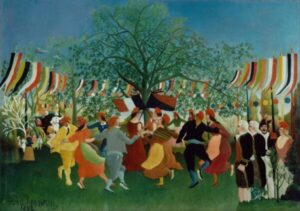10 Incredible Art Thefts That Made Global Headlines
You might assume art theft only happens in movies, packed with daring thieves and dramatic escapes. But truth? It’s even wilder. History’s most infamous art heists rival blockbuster plots—think eccentric criminals stealing masterpieces for reasons beyond greed, relentless detectives chasing clues for decades, and twists so bizarre they’d stump even the savviest screenwriter.
Take the Isabella Stewart Gardner Museum heist, where two men disguised as cops swiped $500 million worth of art, including a Vermeer and Rembrandt sketches. Decades later, the empty frames still hang, haunting reminders of the unsolved case. Or the audacious Mona Lisa theft in 1911, where a Louvre employee hid the painting under his smock, only for Picasso to briefly become a suspect.
What drives these thieves? Sometimes it’s obsession, like the man who stole a Goya portrait just to “admire it in private.” Other times, it’s pure audacity—like the Swedish gang who used speedboats to escape with priceless sculptures. And let’s not forget the detectives: from FBI art crime squads to Interpol’s stolen art database, their cat-and-mouse games span continents and generations.
10. The 1974 Russborough House Heist: A Masterclass in Precision and Audacity
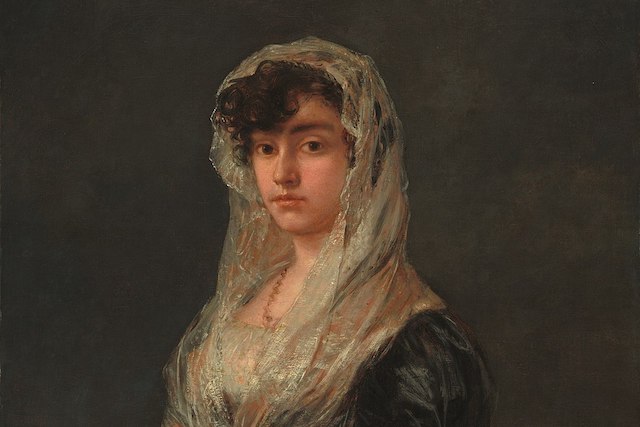
On the chilly evening of April 26, 1974, Russborough House, one of Ireland’s grandest estates, became the stage for a meticulously planned art heist that stunned the world. Led by a mysterious figure described as “an attractive woman with a French accent”, the armed gang broke into the mansion and executed what was, at the time, the largest art robbery in history—netting treasures valued at over $20 million.
This wasn’t a random smash-and-grab. The intruders, operating under the direct command of their enigmatic leader, moved with chilling precision. After storming the house, they bound and gagged the inhabitants, including the well-known art collector Alfred Beit. Their mission was crystal clear: target specific, high-value masterpieces. Among the stolen works were Jan Vermeer’s Lady Writing a Letter, With Her Maid, a delicate and sought-after piece, and Francisco Goya’s Woman in a Mantilla, alone estimated at $2.4 million. The collection also included paintings by Reubens, elevating the heist to legendary status.
What truly captured public fascination was not just the sheer audacity of the crime but the bizarre twist that followed. Within weeks, the stolen artworks were traced back to a Dublin hideout connected to Rose Dugdale, a British heiress turned radical with ties to Irish revolutionary groups. Dugdale’s involvement—bridging the worlds of aristocracy, activism, and high-stakes crime—added layers of intrigue that made this heist one of the most talked-about cases in art history.
All of the stolen paintings were eventually recovered, but the Russborough House heist left a lasting imprint on both law enforcement and the art world. It highlighted the vulnerabilities of even the most secure private collections and underscored how art theft often intersects with political motives, personal convictions, and human drama far stranger than fiction.
9. The Quedlinburg Art Heist: A WWII Soldier’s Stolen Medieval Treasure

When you think of art theft, you might picture masked thieves or high-tech heists. But one of history’s most brazen art robberies was committed by an unlikely culprit—an American soldier. In the chaotic final days of World War II, Lt. Joe T. Meador looted priceless medieval relics from Germany’s Quedlinburg Abbey, hiding them in a mine shaft before smuggling them back to Texas.
The stolen treasures weren’t just ordinary antiques. Among them were the Samuhel Gospel, a jewel-encrusted 9th-century manuscript, and a rare 16th-century prayer book—artifacts of immense cultural and historical value. Meador’s wartime letters later proved his guilt, yet the U.S. Army never prosecuted him, allowing the stolen relics to remain in his family’s hands for decades.
After Meador’s death in 1980, his struggling heirs began selling or loaning the artifacts to keep their business afloat. The theft only came to light in 1990, when a New York Times exposé triggered an international scandal. Legal battles ensued, and by 1991, most of the treasures were returned to Germany—but not before Meador’s family received a $2.75 million settlement for their surrender of the loot.
8. The Ghent Altarpiece Heist: The World’s Most Stolen Masterpiece

Few artworks carry a history as rich—and as turbulent—as the Ghent Altarpiece, officially known as The Adoration of the Mystic Lamb. Created in 1432 by the Flemish master Jan van Eyck, with contributions from his brother Hubert, this sprawling set of 12 intricately painted panels is often hailed as the world’s first true oil painting masterpiece, bridging medieval tradition and Renaissance innovation.
But beyond its artistic brilliance, the Ghent Altarpiece has earned a darker claim to fame: it’s been dubbed the most stolen artwork in history. Over the centuries, the altarpiece—or sections of it—has been stolen at least seven times, often during periods of conflict, cementing its place at the heart of Europe’s most dramatic art crime sagas.
One of the most enduring mysteries unfolded on April 10, 1934. Under the cover of darkness, thieves infiltrated the Saint Bavo Cathedral and made off with the Just Judges panel, a crucial piece depicting a solemn procession of biblical figures. The theft sent shockwaves across Belgium and beyond, sparking an international hunt that would span decades. Despite meticulous investigations, ransom notes, and countless theories—ranging from hidden crypts to Nazi war loot—the panel’s fate remains unknown to this day.
What makes the Ghent Altarpiece’s story so compelling isn’t just the repeated thefts but the almost mythic aura surrounding its survival. It has been hidden, smuggled, nearly destroyed, and yet continues to captivate scholars, detectives, and art lovers alike. The missing Just Judges panel serves as a haunting reminder that some of history’s greatest treasures can simply vanish, leaving behind only questions and legends.
7. The $50 Million Art Heist That Exposed Brazil’s Museum Security Crisis

Picture this: In the predawn darkness of December 2007, three thieves spent just three minutes inside São Paulo’s prestigious MASP museum – and walked away with masterpieces worth over $50 million. What made this art theft so shocking wasn’t just the value of the stolen paintings, but how laughably easy it was.
The thieves used nothing more than a hydraulic jack to pry open the main door and a crowbar to smash through glass – museum security was so poor it lacked even basic alarm systems or motion sensors. Among the stolen treasures were Picasso’s Portrait of Suzanne Bloch and Brazilian icon Cândido Portinari’s The Coffee Worker, alongside uninsured works by Dalí and Velázquez.
Investigators later revealed the museum had been in crisis for years: frequent power cuts due to unpaid bills, no modern surveillance, and security relying on outdated patrols. This wasn’t just a heist – it was a wake-up call about art protection in developing nations.
Miraculously, all paintings were recovered weeks later, abandoned in a São Paulo suburb. But the damage was done: MASP became a global symbol of museum security failures. Could your local art museum be just as vulnerable?
6. The Stockholm Museum of Modern Art Heist: Sweden’s $52 Million Art Scandal

In 1993, Sweden witnessed one of its most audacious art thefts when a gang of skilled thieves targeted the renowned Stockholm Museum of Modern Art. This institution, celebrated for its impressive mix of contemporary and classical masterpieces, became the unlikely stage for a heist that exposed shocking lapses in security—and left a lasting mark on art crime history.
The thieves didn’t bother with the front door. Under cover of darkness on a quiet Sunday night, they executed a cinematic break-in, drilling precise holes through the museum’s roof. With remarkable nerve, they rappelled into the heart of the museum, bypassing alarms and cameras to make off with a trove of invaluable art, estimated at a staggering $52 million.
Among the stolen treasures were several iconic works by Pablo Picasso, including The Spring, Dragonfly, and The Painter*—pieces that encapsulate the bold, imaginative spirit of modern art. The haul also included two remarkable paintings by Georges Braque: *Chateau la Roche-Guyon and Still Life, both cornerstones of the Cubist movement.
Perhaps the most astonishing detail? The entire heist unfolded without a single disturbance. Staff on duty remained blissfully unaware of the unfolding crime, only realizing something was amiss the following morning when a lone security guard discovered the museum’s gaping wound.
This brazen heist didn’t just rob Sweden of priceless cultural heritage; it also sparked nationwide outrage and led to a complete overhaul of security standards in museums across the country. Even today, the Stockholm Museum of Modern Art heist stands as a chilling reminder that even the most prestigious institutions can be vulnerable to meticulous criminal planning.
5. The Bungled Heist: How Thieves Botched Canada’s Biggest Art Theft
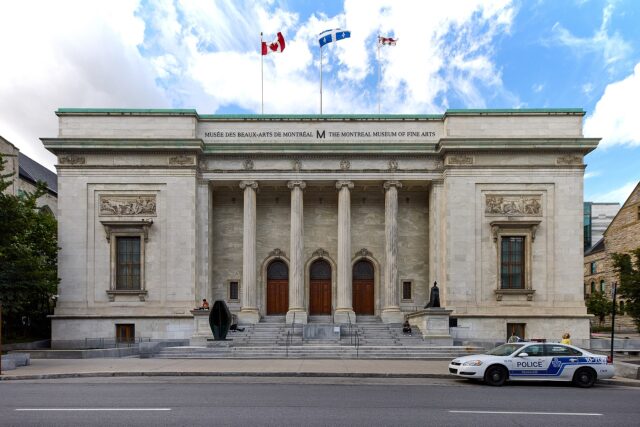
In the dead of night on September 1972, three men rappelled through a skylight into the Montreal Museum of Fine Arts – and proceeded to stage what might be history’s most amateurish art heist.
The would-be master thieves overpowered the guards, then made a critical mistake: they asked their captives to identify the museum’s most valuable works. The confused guards gave such vague descriptions that the robbers left behind priceless pieces by Rembrandt, Picasso, and Goya, instead grabbing 18 lesser paintings and 39 random decorative objects.
Their escape plan was equally comical:
1️⃣ First, they tried rigging a pulley system to haul their loot
2️⃣ Then, they hijacked the museum’s own panel van
3️⃣ When that failed, they simply… walked out
The haul was valued at 2million∗∗(about∗∗14 million today), but could’ve been 10x greater if they’d known what they were doing. While 26 pieces were eventually recovered (some found in a locker), over 30 remain missing – including a rare 17th-century Dutch landscape.
4. The Double Theft of Edvard Munch’s ‘The Scream’: A Tale of Bold Heists
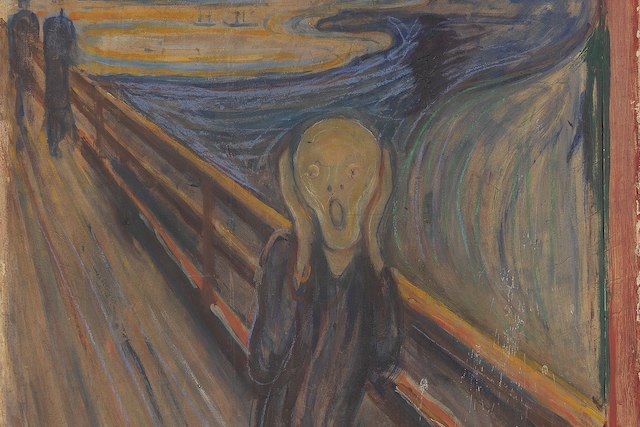
Few artworks have captured the human condition—and the public imagination—quite like Edvard Munch’s ‘The Scream’. But this iconic masterpiece isn’t just famous for its haunting imagery; it’s also notorious for having been stolen not once, but twice, in two of the most brazen art thefts in modern history.
The first heist took place in February 1994, right in the middle of the Lillehammer Winter Olympics. With the world’s eyes turned to Norway, two opportunistic thieves broke into Oslo’s National Gallery by smashing a window and swiftly snatched The Scream from its display. The daring theft sparked a massive international law enforcement operation, culminating in a successful undercover sting led by British detective Charles Hill, which saw the masterpiece safely returned to its rightful place.
A decade later, history repeated itself—but this time, the stakes were even higher. In August 2004, masked gunmen stormed the Munch Museum in Oslo in broad daylight, brandishing weapons and causing chaos. Their targets: not only The Scream, but also Munch’s evocative painting Madonna. The violent nature of the heist sent shockwaves through the art world and forced the museum to shut its doors temporarily. Thankfully, law enforcement swiftly tracked down the culprits, and both paintings were recovered—though not entirely unscathed, with some reports noting minor damage to the priceless works.
These two high-profile thefts didn’t just highlight the vulnerability of world-famous art; they also cemented The Scream’s status as a symbol of both artistic genius and the extremes to which criminals will go in pursuit of cultural treasures.
3. The Theft That Made the Mona Lisa Famous: Vincenzo Perugia’s Audacious Crime

On a quiet Monday morning in August 1911, an unassuming man walked into the Louvre Museum dressed as a maintenance worker – and walked out with the Mona Lisa hidden under his smock. What seemed like an impossible crime was actually shockingly simple: Vincenzo Perugia, an Italian handyman who had previously worked at the museum, knew the lax security protocols firsthand.
For 28 hours, no one noticed Leonardo da Vinci’s masterpiece was missing. Museum staff assumed it had been taken for cleaning or photography – a testament to the institution’s casual attitude toward security. The theft sparked an international scandal, with even Pablo Picasso briefly suspected after his acquaintance, poet Guillaume Apollinaire, foolishly suggested burning the Louvre to “renew art.”
The painting spent two years hidden in Perugia’s Paris apartment, wrapped in red silk. His undoing came when he naively approached a Florence art dealer in 1913, expecting a reward for “returning” the painting to Italy. Instead, the dealer alerted authorities, and Perugia’s claim that he wanted to “return the painting to its homeland” fell flat.
Ironically, this botched art heist transformed the Mona Lisa from just another Renaissance portrait into the world’s most famous painting. Before the theft, it was relatively obscure; after the media circus surrounding its recovery, it became a global icon.
2. The Isabella Stewart Gardner Museum Heist: The Greatest Art Theft in History
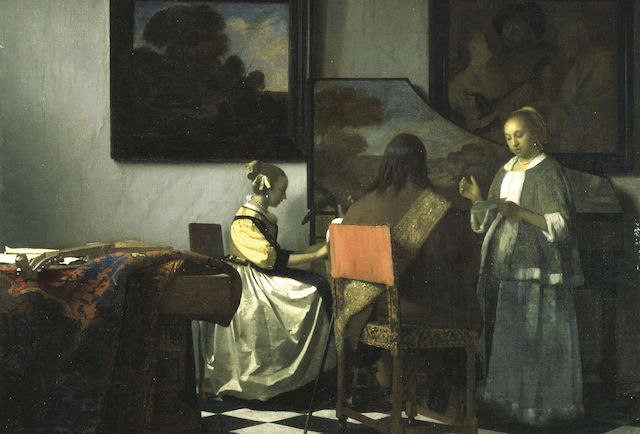
On the night of March 18, 1990, an audacious and meticulously planned art heist unfolded at the renowned Isabella Stewart Gardner Museum in Boston. Disguised as police officers responding to a routine call, two thieves bluffed their way inside, swiftly overpowering the unsuspecting security guards. What followed was a breathtakingly bold robbery: in just 81 minutes, they seized 13 priceless artworks—valued at a staggering $500 million—including masterpieces by Rembrandt, Vermeer, and Degas.
Among the stolen treasures were The Concert by Vermeer and Rembrandt’s The Storm on the Sea of Galilee, the latter being the artist’s only known seascape. These iconic works have since become symbols of the world’s most infamous unsolved art crime.
The theft not only shocked the global art community but also exposed glaring vulnerabilities within the museum’s security infrastructure. At the time, there were no surveillance cameras inside key galleries, and the guards—though well-meaning—lacked adequate training for handling high-risk situations. The aftermath led to sweeping reforms in museum security standards worldwide.
Decades later, the case remains unresolved, and none of the stolen pieces have resurfaced—despite the museum offering a $10 million reward for information leading to their recovery. The empty frames still hanging in the museum today serve as haunting reminders of that fateful night, keeping hope alive that one day these masterpieces might return.
1. World War II: The Greatest Art Theft in History

While World War II is remembered for its unparalleled destruction and human tragedy, it also marked the largest art theft in human history. During this brutal conflict, the Nazi regime orchestrated a systematic looting operation across Europe, seizing an estimated 20% of the continent’s cultural treasures—a staggering number that included masterpieces by some of the world’s most celebrated artists.
The Nazis’ motives were layered and insidious. On one hand, Hitler envisioned creating a colossal “Führermuseum” in Linz, Austria, filled with Europe’s finest artworks, serving as a monument to his twisted ideology. On the other hand, the regime aimed to obliterate the rich, diverse cultural heritage of European Jews, targeting private collections and galleries with ruthless precision. Their disdain for modern art—labeled as “degenerate”—only deepened their resolve to rewrite Europe’s artistic legacy.
Stolen artworks were stockpiled in secret locations like the Musée Jeu de Paume in Paris and Nazi headquarters in Munich. As the war raged on, a courageous network of Allied forces and civilian volunteers—often referred to as the “Monuments Men”—raced against time to safeguard and recover these cultural treasures, hiding them away in caves, castles, and even salt mines. Their heroic efforts saved countless works from destruction, but despite these interventions, over 600,000 pieces were looted during the war, and heartbreakingly, tens of thousands remain missing to this day.
This chapter of history is not just a tale of stolen canvases—it’s a stark reminder of how art embodies identity, memory, and resistance. The global quest to locate and return these masterpieces continues, with each recovered piece serving as a powerful symbol of resilience.








